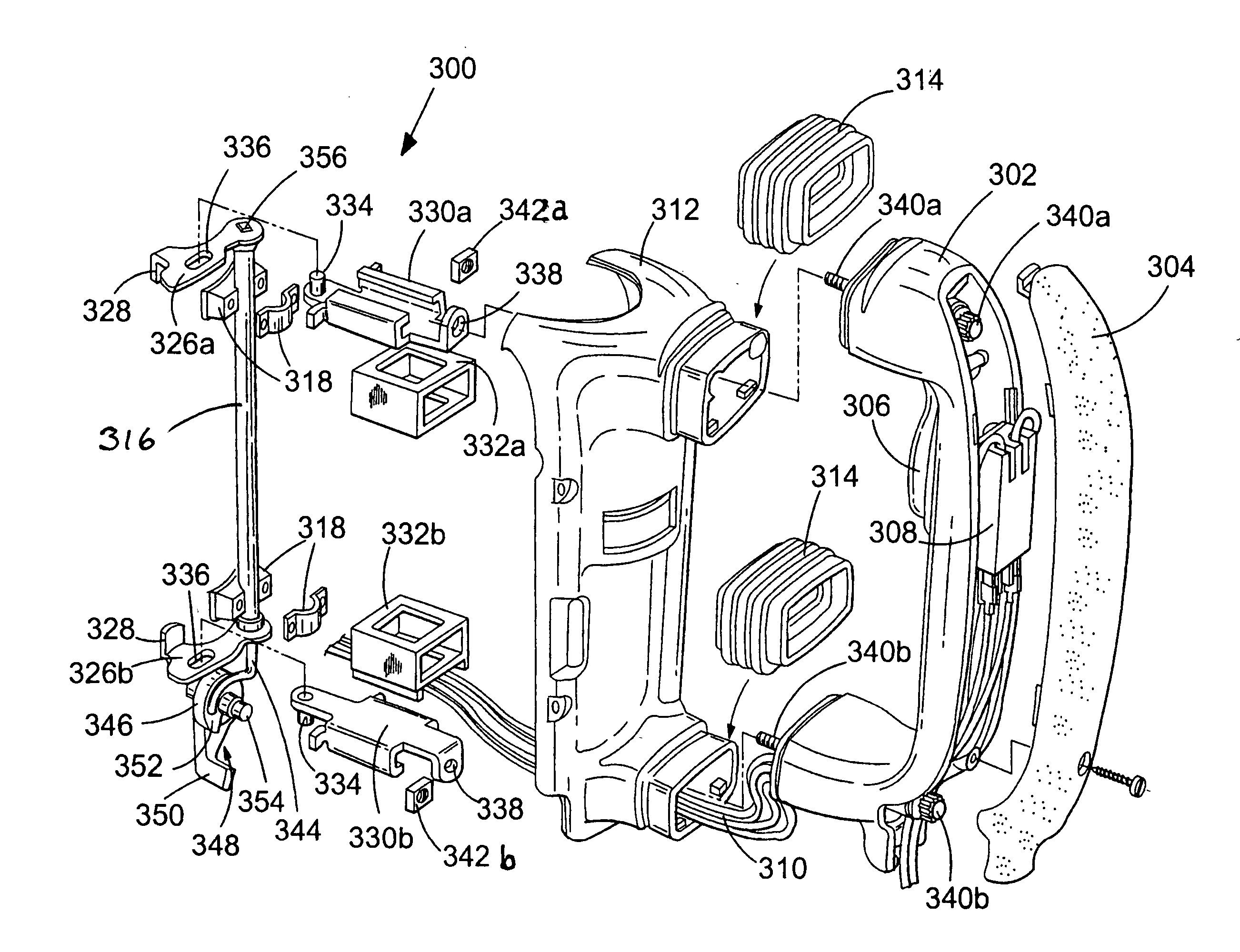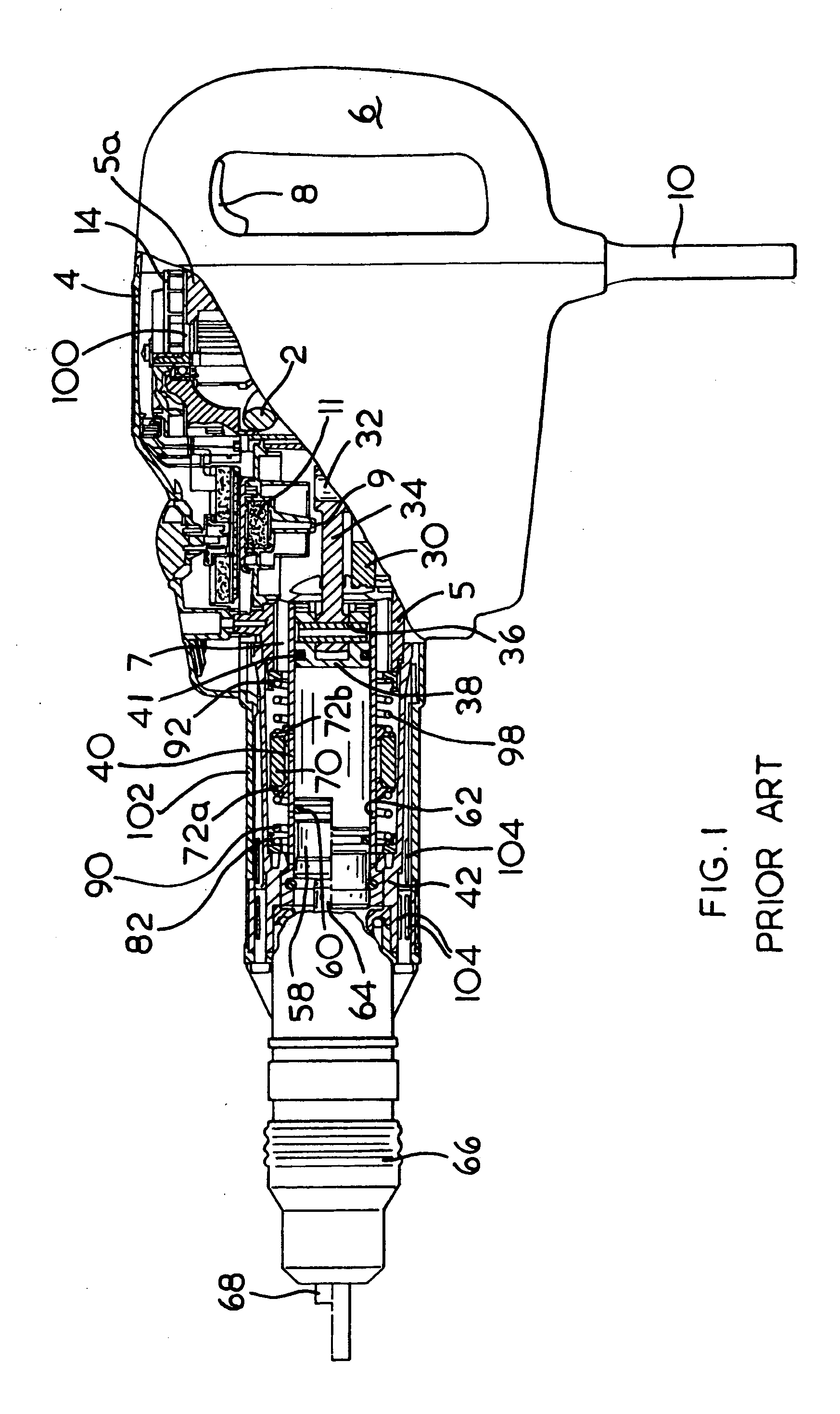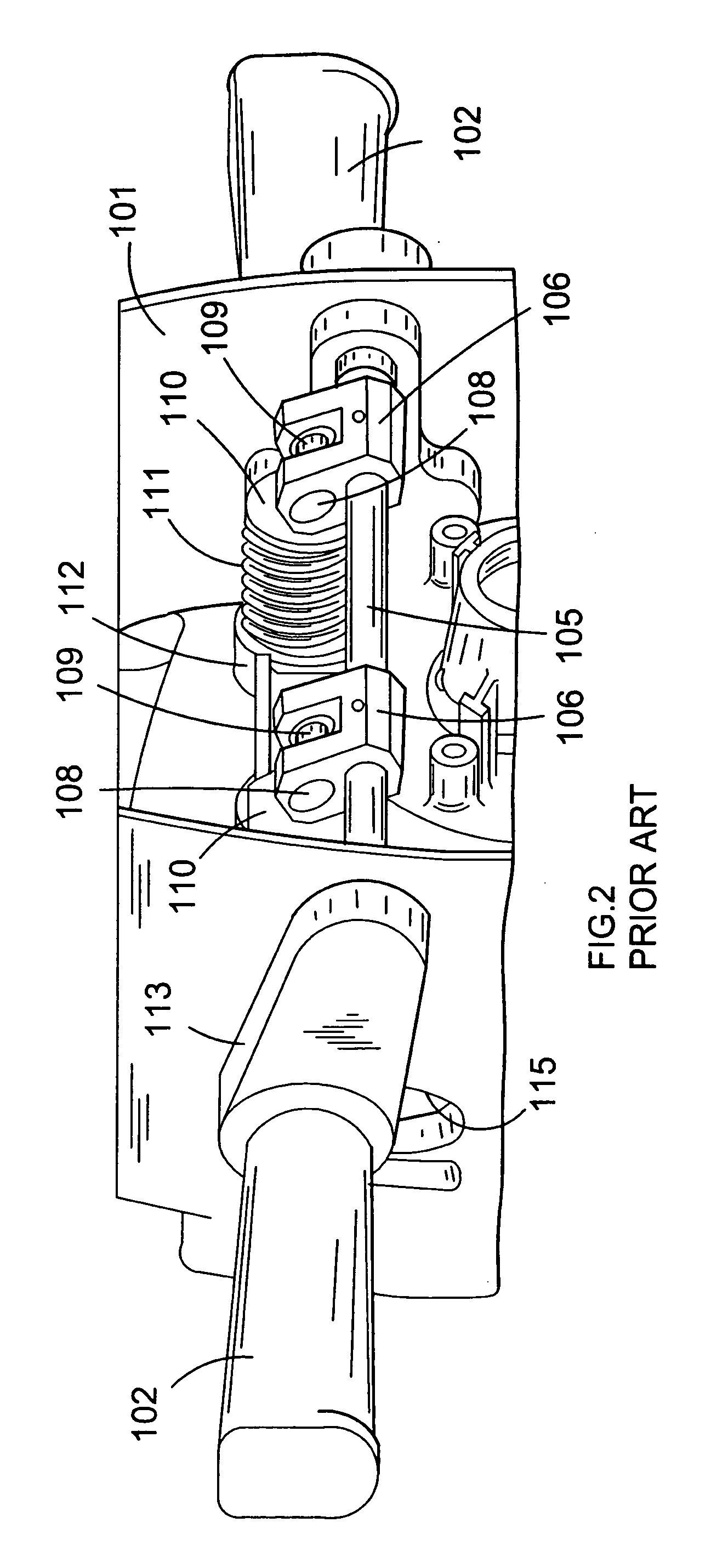Vibration reduction apparatus for power tool and power tool incorporating such apparatus
- Summary
- Abstract
- Description
- Claims
- Application Information
AI Technical Summary
Benefits of technology
Problems solved by technology
Method used
Image
Examples
Embodiment Construction
[0044] Referring to FIG. 3, a handle assembly 300 for use as part of a power hammer (not shown) has a handle 302 which has a rubberised gripping portion 304. Handle 302 also has a trigger 306 which activates switch 308 and provides power to the hammer mechanism via cables 310. Handle 302 is mounted to the housing 312 of the power tool, only a portion of which is shown in FIG. 3, and handle 302 is capable of limited movement relative to housing 312. Rubberised sleeves 314 cover the joint between handle 302 and housing 312.
[0045] The handle assembly also has a hollow axle 316 which is attached to the housing 312 by brackets 318 and is able to rotate relative to the housing 312 between a first position and a second position. Axle 316 is biased towards said first position by biasing means in the form of a torsional spring 344. Torsional spring 344 extends within hollow axle 316 and is fixed at one end relative to housing 312 by engaging portion 346 which engages adjusting means 348 but...
PUM
 Login to View More
Login to View More Abstract
Description
Claims
Application Information
 Login to View More
Login to View More - R&D
- Intellectual Property
- Life Sciences
- Materials
- Tech Scout
- Unparalleled Data Quality
- Higher Quality Content
- 60% Fewer Hallucinations
Browse by: Latest US Patents, China's latest patents, Technical Efficacy Thesaurus, Application Domain, Technology Topic, Popular Technical Reports.
© 2025 PatSnap. All rights reserved.Legal|Privacy policy|Modern Slavery Act Transparency Statement|Sitemap|About US| Contact US: help@patsnap.com



